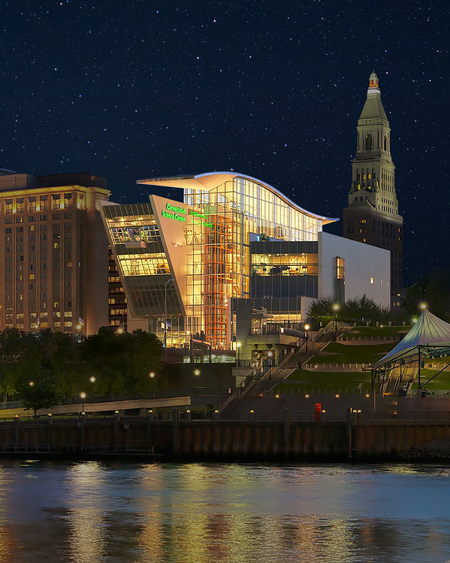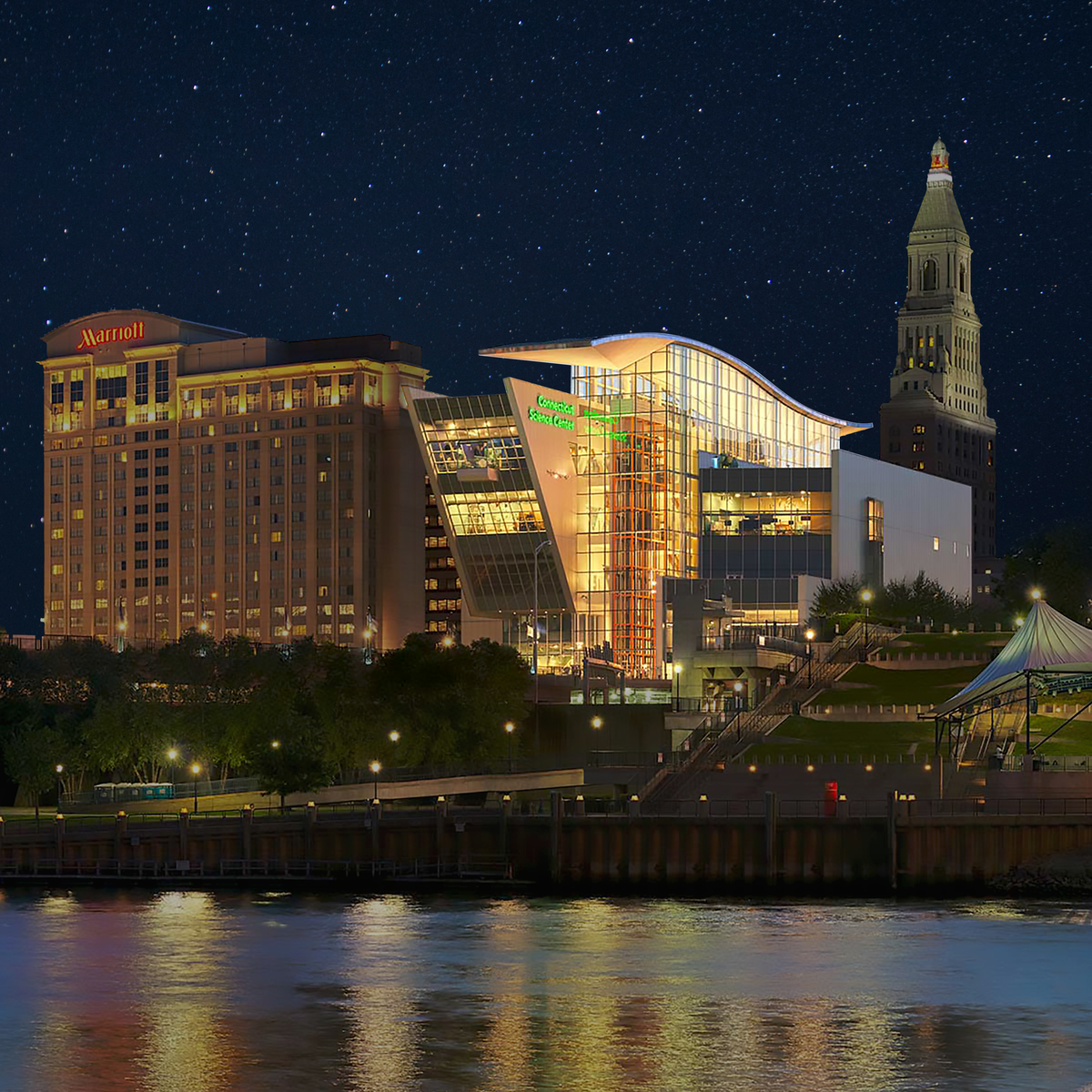
Sustainable Science Learning
All green, all the time. The Connecticut Science Center was built with sustainability at its core — earning LEED certification from the U.S. Green Building Council. LEED, or Leadership in Energy and Environmental Design, is a prestigious distinction awarded to buildings that go above and beyond in eco-friendly design, construction, and operation. Here are just a few of the many ways the Science Center serves as a real-world example of what it means to "be green."
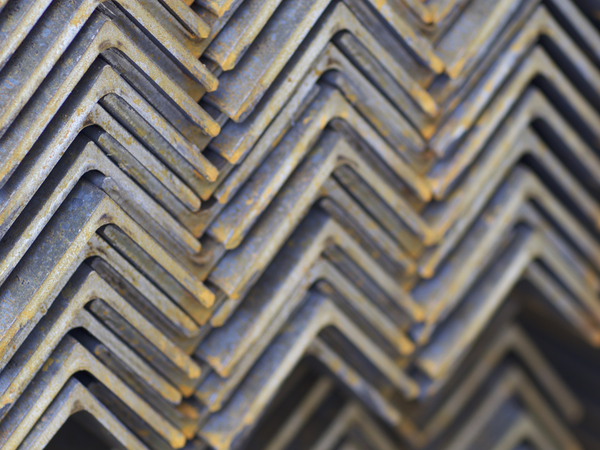
Green by Design
We were built for a greener future. From the very beginning, the Science Center was designed with sustainability in mind — taking eco-friendly innovation to the next level.
- LEED-accredited professionals collaborated closely with the Science Center to ensure sustainability was fully integrated into the design.
- An impressive 95% of the steel used in construction was made from recycled cars.
- 75% of construction and demolition waste was recycled—diverted back into manufacturing or reused as landfill cover after contaminated soil was safely removed.
- Locally manufactured building materials were used to reduce transportation emissions and support the regional economy.
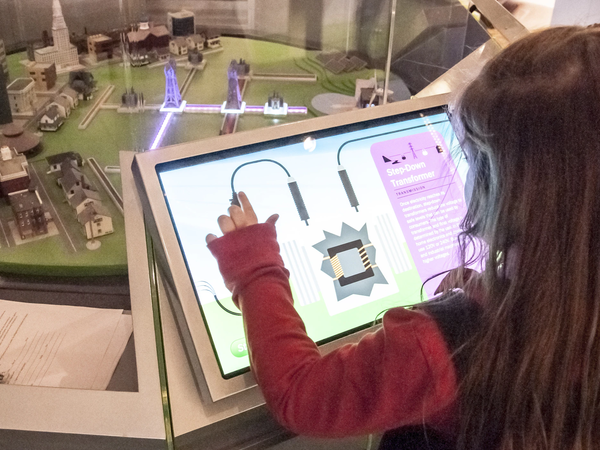
Eco-Friendly, Every Day
At the Connecticut Science Center, sustainability isn't just built into our walls — it's part of how we live and learn every day. From delivering fresh air and monitoring carbon dioxide levels for a healthier indoor environment to furnishing our spaces with recycled materials, we infuse green practices into everything we do. Visitors can explore renewable energy and energy-saving innovations in our Smart Energy Gallery, one of ten immersive galleries. Plus, our educational programs empower guests of all ages to take green thinking home with them.
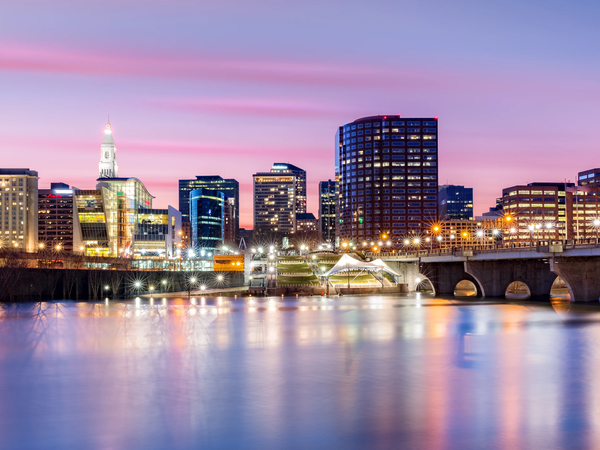
Redefining the Hartford Skyline
The Hartford skyline has been redefined by the distinctive Connecticut Science Center building, designed by world-renowned architect Cesar Pelli.
Cesar Pelli & Associates was selected to design the Connecticut Science Center in September 2004 after a competition among architects from around the world. Mr. Pelli, whose offices are in New Haven, CT, proposed a building concept that is strongly reflected in the final design of the Center. “The Connecticut Science Center,” Pelli said, “will be a building that will communicate the excitement of science to the surrounding streets, river, and highway. The forms are ambitious and dynamic. They appear to reach out, beyond their physical limits.”
The building is a total of 154,000 square feet. The Pfizer Foundation Science Discovery Center is located at street level and faces Columbus Boulevard; this area is home to four educational laboratories and a community room. The 460-space, three-floor Science Center/Riverfront parking garage is directly adjacent to the Discovery Center, along with back-of-house support services such as the loading dock and recycling facility. Directly above the parking garage is the main structure of the Science Center and a plaza which connects to the riverfront and downtown Hartford. In mid-2010, a pedestrian bridge opened between the Science Center plaza and the Connecticut Convention Center.
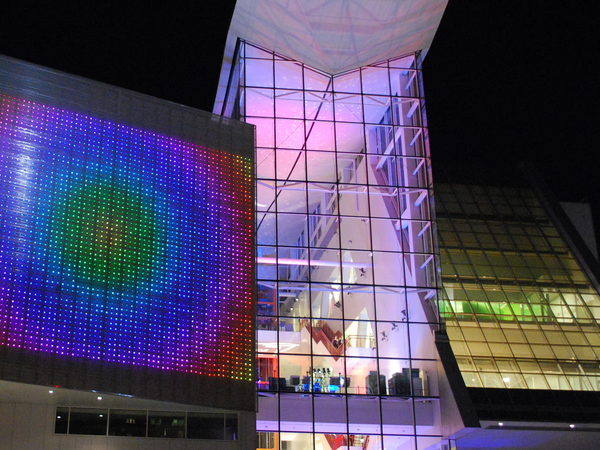
Powering a Cleaner Tomorrow
By generating clean energy on-site, the Connecticut Science Center eases the demand on the New England power grid and helps protect the environment — preventing over 270 metric tons of carbon dioxide emissions each year compared to traditional fossil-fueled power sources. That’s like planting 63 acres of forest annually!
- 48% of the exterior features energy-saving glass, with interior sensors that adjust lighting based on natural light levels to conserve energy.
- Designed for a 60-foot solar panel wall to help power and heat the building.
- A planted rooftop deck and plaza help regulate indoor temperatures, while native plants reduce irrigation needs by 50%.
- Low-flow sinks and lavatories conserve water throughout the building.
- Electricity is sourced from certified Green-e® renewable energy providers.

